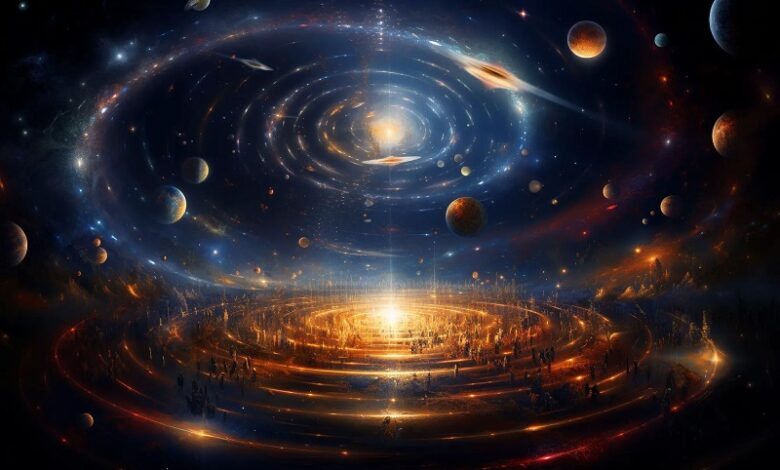8 Bizarre Cosmic Phenomena in the Vastness of Space

By Agnibeena Ghosh
The universe, with its infinite expanse, is a treasure trove of mysteries that continue to captivate astronomers and space enthusiasts alike. Among the myriad celestial wonders, some phenomena stand out for their sheer peculiarity. From diamond planets to enigmatic clouds, let’s embark on a journey through the strangest cosmic occurrences that challenge our understanding of the cosmos.

1. The Diamond Planet: Imagine a planet made of precious gemstones. 55 Cancri e, a planet twice the size of Earth, orbits so close to its star that its surface is believed to be covered in diamond. Intense heat and pressure have transformed its carbon into crystalline structures, creating a surreal cosmic jewel.

2. The Himiko Cloud: Named after a legendary queen, the Himiko cloud is an enormous, distant structure that defies easy classification. This “blob” of hydrogen gas existed when the universe was only 800 million years old, leaving astronomers puzzled about its origin and purpose.

3. The Large Quasar Group: Envision a cluster of quasars spanning an inconceivable scale—a billion light-years across! The Huge-LQG is one such structure, a conglomeration of dozens of quasars, which are extremely bright and distant objects powered by supermassive black holes. This discovery challenges our understanding of cosmic structures.

4. Gravitational Lensing: Einstein’s theory of general relativity predicted it, but witnessing gravitational lensing is still a remarkable experience. Massive objects, like galaxies, bend and distort light from background objects due to their gravitational pull. This phenomenon acts as a cosmic magnifying glass, enabling us to observe distant galaxies that would otherwise remain hidden.

5. The Mickey Mouse Galaxy: Situated 4 billion light-years away, the SDSS J1038+4849 galaxy resembles the iconic Disney character. Two massive lobes, caused by the shockwave from the galaxy’s central black hole, give rise to this uncanny resemblance, reminding us of the whimsical nature of the universe.

6. The Cold Star: Stars are known for their scorching temperatures, but WISE 0855−0714 challenges this norm. Classified as a “Y dwarf,” this star is colder than the human body, with a temperature hovering around room temperature. Its dim glow offers insights into the cooler end of the stellar spectrum.

7. The Newfound Blob: In the realm of space oddities, the newfound blob in the constellation Aquarius has garnered attention. This enigmatic structure appears to be a vast gas cloud, challenging conventional understanding. Its origin and composition remain subjects of intrigue and study.

8. The Pillars of Creation: Immortalized by the Hubble Space Telescope, the Pillars of Creation are awe-inspiring columns of gas and dust in the Eagle Nebula. These mammoth structures are stellar nurseries, where new stars are born. Their iconic appearance showcases the delicate dance between destruction and creation in the cosmos.
As we venture deeper into the cosmos, armed with advanced telescopes and innovative technology, we are bound to encounter more of these celestial enigmas. These discoveries prompt us to reevaluate our existing knowledge and push the boundaries of human understanding.In a universe brimming with countless galaxies, stars, and planets, the bizarre and the extraordinary are woven into its fabric. These phenomena, far from being anomalies, serve as testaments to the richness and complexity of the cosmos. They invite us to keep seeking, keep questioning, and keep marveling at the wonders that lie beyond our earthly realm.






